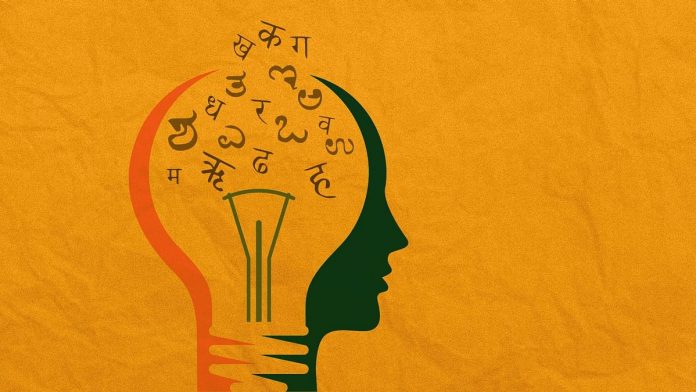This article is written by Anusha Misra from NALSAR University of Law. This article evaluates the educational rights of children with special needs.
Table of Contents
Introduction
Ensuring that children with special needs receive the education to which they are entitled might be one of the most difficult situations for parents. Some children struggle in school, with issues ranging from concentration, learning, language, and perception to behavioural issues and/or making and keeping friends. Others suffer from more serious issues, such as medical or psychological ailments, emotional issues, or learning disabilities. Whatever the situation, these children are still entitled to an education.
All citizens, including the disabled, have the right to education. Article 29(2) of the Constitution states that no citizen shall be refused to enter into any state-run educational institution or receive state-funded help on the basis of religion, race, caste, or language. Article 45 of the Constitution mandates that all children (including the disabled) receive free and obligatory education until they reach the age of 14. On the basis of religion, race, caste, or language, no child can be denied entrance to any state-run educational institution or receive state-funded aid.
The Right of Children to Free and Compulsory Education Act, 2009
The government has taken some special steps to ensure that one’s child receives a good education. To begin, the Right of Children to Free and Compulsory Education Act of 2009 ensures that all children aged 6 to 14 get free and compulsory education in a neighbourhood school. Exercising this privilege entitles students with disabilities to free textbooks, clothing, writing materials, and specific learning and support materials. This is something they can do at any moment, right from class 1 to class 8. Moreover, just like every other fundamental right in the country, any child in this age group, regardless of caste, socioeconomic background, region, language, or gender, can exercise his or her right.
Which disabilities are covered under the Act
Children falling under the following three categories have the right to free and compulsory education in a neighbourhood school as per law:
- Children who are blind, have low vision, have been cured of leprosy, have hearing loss, locomotor disability, mental retardation, or mental illness;
- Children with any of the conditions relating to autism, cerebral palsy, mental retardation, or a combination of any two or more of such conditions and includes a child suffering from severe multiple disabilities;
- Children with severe disabilities, that is eighty percent or more of one or more multiple disabilities.
Specific learning disabilities are not currently recognized under this Act. Although the adoption of the Rights of Persons with Disabilities Act would be a step forward, things may not change until a certification mechanism to identify these disabilities is established under the Act’s standards.
What is one’s child entitled to under the Act
The Delhi School Education (Free Seats for Students from Economically Weaker Sections and Disadvantaged Groups) Order 2011 includes “children with special needs” and “disabled students” (as defined under the Persons with Disabilities Act). As a result, they are classified as children from “disadvantaged groups,” and are eligible for the 25% of seats allotted for children from “disadvantaged groups” in specified schools.
These children can also be enrolled in all schools under the Act through regular intake and are entitled to protections such as:
- No holding back or expulsion till class VIII
- No physical punishment or mental harassment
- Payment of capitation fees is prohibited, and screening processes are required.
Within two years, all accredited, aided and unaided private schools in Delhi must hire special educators and make the school premises barrier-free. If students with impairments were already enrolled in these schools, these procedures have to be implemented at once. Otherwise, the school may lose its accreditation. Children with severe disabilities are also entitled to receive education at home. A special educator must come to the child’s home to teach them in a home-based setting. It is vital to remember that these pupils are not required to attend a home-based school.
Where can one’s child avail these rights
Children can exercise these rights under neighbourhood schools defined as:
- Neighbourhood schools are ones that are as close to the child’s home as feasible, yet within a one-kilometre radius, for children in grades I through V.
- For children in grades VI to VIII, neighbourhood schools are those located as close as feasible to the child’s home yet within a three-kilometre radius.
- Despite the fact that the Act requires a school mapping exercise to be completed in order to identify schools that would be considered “neighbourhood schools,” it appears that this has not been done.
- Since other factors are prohibited by the Act, there is a set of criteria in the Recognized Schools (Admission procedure for pre-primary class) Orders (as amended) that allocates 70 out of 100 points to pupils who live within an 8-kilometre radius of the school.
Exceptions
Not every neighbourhood school is required to provide free and mandatory elementary education to all students. Schools that provide religious instruction, for example, are exempt from the Act. Also, not all of the Act’s provisions apply to all other schools. The amount of money a school receives from the government or a local government determines how far it will go to comply with the provisions of this Act.
For instance:
If a school is formed, owned, or managed by the government or a local government, it must provide the following:
- Give all elementary school students and pre-school students (where services are given) free and obligatory education; and
- If a child is enrolled in a school that does not provide for the completion of primary education, they can request a transfer to one that does.
If an aided school receives government or local authority funding or grants to cover all or part of its expenses (Section 2 (n) (ii)), it must provide:
- Only a percentage of children accepted (including in pre-school, if services are available) free and compulsory education; the proportion depends on the amount of government help received (subject to a minimum of 25 percent) and,
- If a child is enrolled in a school that does not provide for the completion of primary education, they can request a transfer to one that does.
If the school is unaided and does not receive any government or local authority aid or grants to cover its expenses, or if it belongs to a specific category, such as Rajkiya Pratibha Vikas Vidyalayas, Kendriya Vidyalayas, Navodaya Vidyalayas, or Sainik Schools, the school just needs to provide:
- Only 25% of the strength of Class I, free and obligatory education for children from the poorer part and disadvantaged groups in the neighbourhood, as well as pre-school students (where services are provided).
What can one do when their child’s right is infringed
There have been various initiatives by parents of disabled children to assure the implementation of their children’s rights. Pramod Arora, a parent of a disabled child was successful in his challenge to an amendment to the Right to Education Act. His efforts were successful in obtaining specific admission procedures for children with exceptional needs. This included the appointment of a Nodal Agency under the Department of Education to supervise all admissions of these children.
While all schools, including private unaided schools, are required to make their campuses barrier-free and hire special educators, the court ordered the Department of Education’s Nodal Agency to keep a zone-by-zone list of schools and the impairments they can accommodate.
What’s the application process for these schools
Admission applications can be sent to any school that can accommodate an applicant’s impairments, and in this case, the Nodal Agency will waive the requirement that the school is located in a neighbouring region.
A similar form for admission of children with disabilities must be sent to both the schools and the Nodal Agency, and the applicant may list up to five schools of their choosing. The application should be sent to the applicant’s top-choice schools as well as the Department of Education.
What are the parents’ responsibilities in the special education process
Parental responsibilities might change depending on a variety of issues, including the child’s disability. Parental obligations, as a result, are less well defined than parental rights.
Some of the following tips, however, may be useful in ensuring that your child’s rights are protected:
- Develop a partnership with the school and share relevant information about your child’s education and development.
- Ask for clarification of any aspect of the program that is unclear to you.
- Consider and discuss with your child’s teacher how your child might be included in the regular school activities program. Do not forget areas such as lunch, recess, art, music, and physical education.
- Monitor your child’s progress and periodically ask for a report. If your child is not progressing, discuss this with the teacher and determine whether the program should be modified.
- Discuss with the school any problems that occur with your child’s assessment, placement, or educational program. If you are uncertain about how to resolve a problem, you can turn to the advocacy agencies found in most states for the guidance you need to pursue your case.
- Keep records. There may be many questions and comments about your child that you will want to discuss, as well as meetings and phone conversations you will want to remember.
- Join a parent organization. In addition to giving parents an opportunity to share knowledge and gain support, a parent group can be an effective force on behalf of your child.
The National Education Policy and educational rights for children with special needs
The National Education Policy 2020 (NEP) of India has been lauded as ushering in a new age of educational reform. It does, however, occur within a context of chronic policy inadequacies in the education of disabled children. In India, inclusive education has been defined as the education of children with disabilities. Disabled children rarely graduate from primary school, with only 9% completing secondary school. Around 45% of disabled people are illiterate and only 62.9% of disabled people between the ages of 3 and 35 have ever attended regular schools. Disabilities of particular types and genders are disproportionately affected. Children with autism and cerebral palsy, as well as girls with impairments, are the least likely to attend school. The most common barrier to a child’s access to pre-school and primary education is a disability. Less than 40% of school buildings have ramps, and only about 17% of schools have accessible restrooms.
Despite the fact that technology is a major focus of the NEP. The finalized policy incorporates several recommendations of disability organizations on the 2019 draft. According to the NEP, children with disabilities will be able to participate equally in all aspects of the educational system. The 2016 Rights of Persons with Disabilities Act (RPWD) and its provisions for inclusive education, which is defined as a system of education in which students with and without disabilities learn together, are a big success. Nondiscrimination in schools, accessible infrastructure, appropriate accommodations, tailored supports, the use of Braille and Indian Sign language in the classroom, and monitoring are just a few of the proposals. The policy calls for the hiring of special educators with cross-disability training, as well as the inclusion of disability awareness in teacher education.
Conclusion
The ethics of the dual system are being questioned in light of the struggle to assert and safeguard the rights of the disabled. The common system, which would bring ‘everything’ onto a single platform, is seen as a better choice. As a result, it’s critical to implement a variety of changes at various levels in order to create a ‘school for all’ with an inclusive curriculum. The curriculum must be balanced in such a way that it is accessible to all while also catering to the particular requirements of all students. It’s also crucial to examine educational difficulties. All pupils should be able to access the curriculum, which would necessitate specialized assistance. Then, by providing this specialized help, care must be taken to ensure that learners with special needs are not isolated from the rest of the class.
Another factor to consider is how the school organizes itself to be an effective school that caters to the particular needs of all students. While maintaining flexibility in the curriculum’s timetable and delivery, the school should also make available the necessary resource support in the form of special educators, assistive technologies, and teaching-learning materials. Professional development for teachers and educators is critical, and it must include attitudinal shifts as well as the information and skills required to lead to a more inclusive society. Finally, no inclusive education project would be complete without collaboration with parents and external support from NGOs and special schools for training, curriculum delivery, and assessment, among other things.
References
- https://vikaspedia.in/education/parents-corner/guidelines-for-parents-of-children-with-disabilities/legal-rights-of-the-disabled-in-india#:~:text=Children%20with%20disabilities%20shall%20have,promoted%20for%20children%20with%20disabilities.
- http://www.irockit.in/right-to-education-for-children-with-special-needs/
LawSikho has created a telegram group for exchanging legal knowledge, referrals, and various opportunities. You can click on this link and join:
 Serato DJ Crack 2025Serato DJ PRO Crack
Serato DJ Crack 2025Serato DJ PRO Crack











 Allow notifications
Allow notifications



